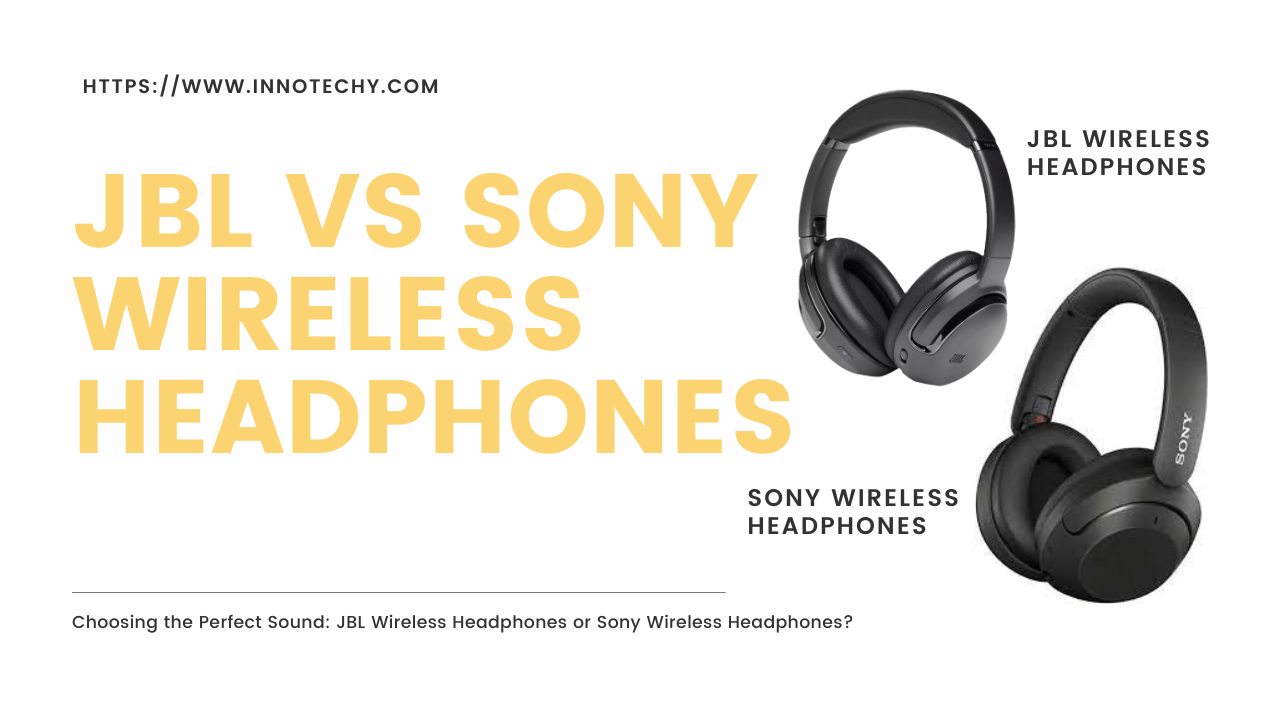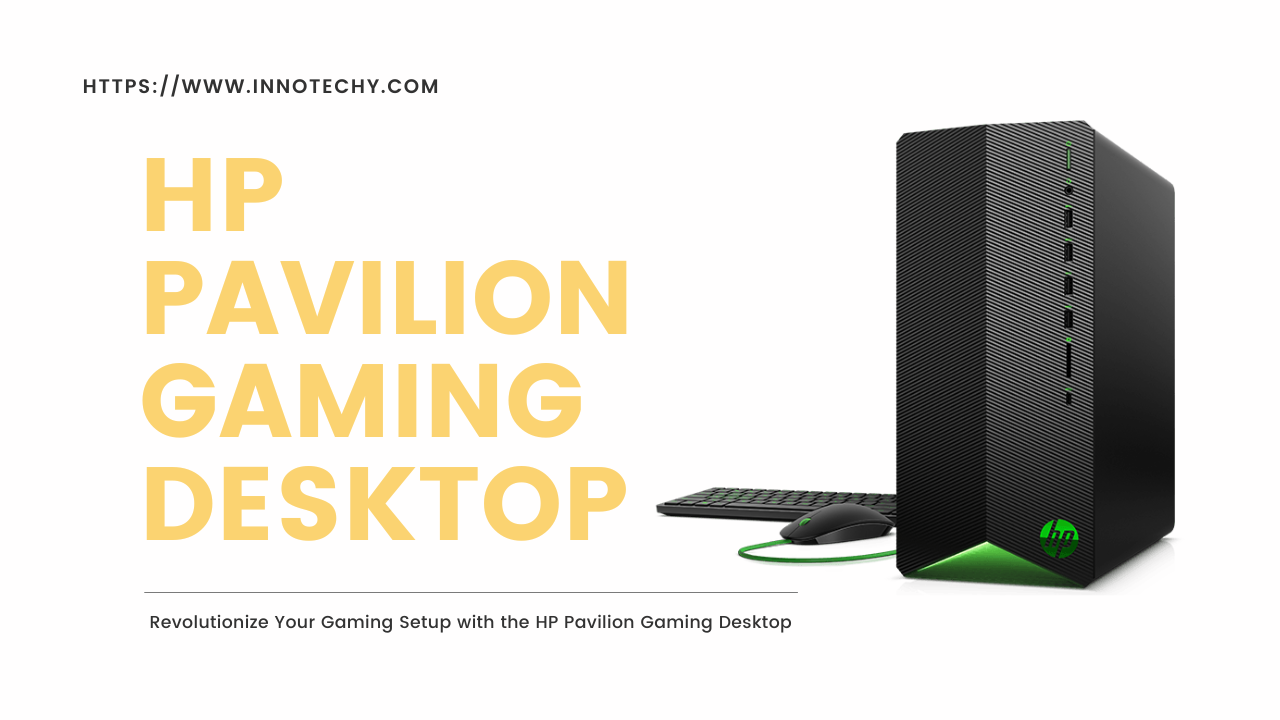Introduction
Wireless headphones have become increasingly popular in recent years due to their convenience and freedom from tangled cords. JBL and Sony are two prominent brands in the market, known for their high-quality audio products. Many consumers often find themselves torn between these two options when it comes to choosing the perfect sound experience.
[lwptoc]
Overview of JBL Wireless Headphones:

Introduce JBL as a brand and its expertise in audio technology:
JBL is a well-known brand in the audio industry with a strong reputation for providing high-quality sound experiences. Founded in 1946, JBL has a long history of expertise in audio technology and has become synonymous with superior audio performance.
JBL’s commitment to innovation and sound engineering has made them a trusted name among professionals, musicians, and audio enthusiasts. The brand has a track record of producing cutting-edge audio solutions including headphones, speakers, and other audio devices.
Discuss the range of JBL wireless headphones available in the market:
JBL offers a diverse range of wireless headphones to meet different user preferences and needs. Their headphone lineup includes options for various use cases, such as sports, travel, gaming, and everyday listening. JBL offers both on-air and over-ear wireless headphone models, allowing consumers to choose what suits them best.
Within its product range, JBL offers different models with different features, designs, and price points. From entry-level options to premium offerings, JBL makes sure there’s a headphone to suit every budget and need.
Highlight the key features and technologies offered by JBL Headphones:
JBL wireless headphones are known for their exceptional sound quality and immersive audio experiences. The brand incorporates advanced audio technologies into its headphones to deliver impressive performance.
Some of the key features commonly found in JBL headphones include powerful and balanced audio drivers, precise frequency response, and rich bass reproduction. JBL often emphasizes a signature sound profile that is vibrant, dynamic, and enjoyable across a variety of music genres.
Additionally, JBL integrates convenient features into its wireless headphones, such as Bluetooth connectivity for wireless freedom and easy pairing with devices. Many JBL models also include features like a built-in microphone for hands-free calling, voice assistant support, and intuitive controls for music playback and call management.
Mention any unique selling points or advantages of JBL headphones:
JBL headphones have several unique selling points that set them apart from the competition. These benefits may include:
Durability and build quality: JBL is known for building headphones that are durable and long-lasting. They often use high-quality materials to ensure longevity and resistance to wear and tear.
Comfort and Ergonomic Design: JBL focuses on designing headphones that are comfortable to wear for long periods of time. They focus on factors such as cushioning, adjustable headbands, and lightweight construction to enhance user comfort.
Wireless Technology and Connectivity: JBL wireless headphones take advantage of Bluetooth technology to provide seamless wireless connectivity with compatible devices. This allows users to enjoy a tangle-free experience and freedom of movement.
Value for money: JBL offers a range of wireless headphones at different price points, ensuring that there are options available for different budgets. This affordability combined with the brand’s reputation for quality makes JBL headphones a great choice.
Overview of Sony Wireless Headphones:
Introduce Sony as a leading brand in the audio industry:
Sony is a globally recognized brand with a strong presence in the audio industry. With decades of experience and expertise, Sony has established itself as a leader in audio technology and has earned a reputation for producing high-quality audio products.
Sony’s commitment to innovation and sound engineering has made them a trusted name among professionals, enthusiasts, and everyday consumers. Their focus on delivering exceptional audio experiences has allowed Sony to create a wide range of audio products, including wireless headphones.
Discuss the range of Sony wireless headphones available in the market:
Sony offers a wide range of wireless headphones to meet the varied preferences and needs of the user. Their headphone lineup includes various usage options, such as listening to music, gaming, sports, and more. Sony offers both over-ear and in-ear wireless headphone models, allowing consumers to choose the style that best suits them.
Within its product range, Sony offers different headphone models with different features, designs, and price points. This ensures that there is a Sony wireless headphone for every budget and audio need.
Highlight the key features and technologies offered by Sony headphones:
Sony headphones are known for their exceptional sound quality and advanced features. The brand incorporates advanced audio technologies into its headphones to deliver immersive and accurate audio performance.
Some of the key features commonly found in Sony headphones include high-quality audio drivers, wide frequency response, and accurate sound reproduction. Sony often emphasizes a balanced and detailed sound signature that caters to a wide variety of music.
Apart from the sound quality, Sony integrates various features and technologies in its wireless headphones. These may include active noise cancellation (ANC) to block out external noise, touch controls for easy playback and call management, longer battery life for longer listening sessions, and compatibility with voice assistants for hands-free control. Is.
Mention any unique selling points or advantages of Sony headphones:
Sony headphones have several unique selling points that set them apart from the competition. These benefits may include:
Industry-Leading Noise Cancellation: Sony is widely recognized for its cutting-edge noise cancellation technology. Their headphones often feature top-of-the-line ANC, allowing users to enjoy a truly immersive and uninterrupted audio experience.
High-Resolution Audio Support: Many Sony headphones support high-resolution audio formats, enabling users to enjoy studio-quality sound reproduction with exceptional clarity and detail.
Comfort and ergonomic design: Sony focuses on comfort and ergonomics in its headphone designs, ensuring a comfortable fit for long listening sessions. They often include features such as adjustable headbands, cushioned ear cups, and lightweight construction.
Gaming and Multimedia Focus: Sony offers headphones specially designed for gaming and multimedia purposes. These headphones may include features such as 3D audio, customizable sound profiles, and compatibility with gaming consoles and virtual reality systems.
Sound Quality Comparison
Compare the sound quality of JBL and Sony wireless headphones:
When comparing the sound quality of JBL and Sony wireless headphones, it is important to evaluate factors such as clarity, accuracy, balance, and overall audio performance. Both brands strive to deliver the best sound experiences, but their approach can be subtly different.
Discuss the audio profiles, frequency response, and overall performance of each brand:
JBL and Sony’s headphones often have different audio profiles and frequency responses. JBL headphones can emphasize a vibrant and vibrant sound signature, focusing on impactful bass response without sacrificing clarity in other frequency ranges. Sony headphones, on the other hand, may aim for a balanced audio profile, offering detailed highs, well-defined mids, and controlled bass.
In terms of overall performance, both brands incorporate advanced audio technologies to enhance sound quality. They can use high-quality audio drivers, digital signal processing, and proprietary audio enhancement algorithms to provide immersive and accurate audio reproduction.
Mention any notable differences in voice signature and user preferences:
A notable difference between JBL and Sony headphones is in their sound signatures. JBL headphones offer a more pronounced bass response, making them suitable for listeners who enjoy genres like hip-hop, EDM, or pop that benefit from impressive low-end reproduction. On the other hand, Sony headphones can deliver a more balanced sound signature, which appeals to listeners who prefer accurate sound reproduction across genres.
User preferences play an important role in choosing between JBL and Sony headphones. Some listeners may prefer a more bass-forward sound, while others may prefer a more neutral and balanced audio presentation. Personal taste and music genres are important to consider when deciding between the two brands.
Provide examples or definitions to support the comparison:
To further support the comparison, it may be beneficial to provide examples or testimonials from users who have tested both JBL and Sony wireless headphones. These first-hand accounts can offer insight into specific models, their sound quality, and user satisfaction. Examples of definitions can help readers understand real-world experiences and subjective aspects of sound quality.
Including examples such as specific models or testimonials from trusted sources, audio enthusiasts, or professional reviewers can add credibility to the comparison and give readers additional perspective on the sound quality of JBL and Sony headphones.
Design and Comfort
Compare the design aesthetics of JBL and Sony headphones:
When comparing the design aesthetics of JBL and Sony headphones, it’s important to assess the visual appeal, style, and overall aesthetics of each brand’s headphone lineup. JBL and Sony often have different design philosophies that cater to different consumer preferences.
JBL headphones can feature a modern and sleek design, often featuring bold color choices and catchy tunes. Their design language can be more vibrant and dynamic, reflecting the energetic nature of their sound signature. Sony headphones, on the other hand, may lean towards a more sophisticated and minimalist design, with a focus on clean lines, premium materials, and subtlety and elegance.
Discuss the construction quality and materials used in each brand of headphones:
Both JBL and Sony prioritize build quality to ensure durability and longevity. They often use high-quality materials in the construction of their headphones to withstand daily use and provide a premium feel.
JBL headphones can use materials like durable plastic, metal accents, and soft-touch finishes, which strike a balance between sturdiness and comfort. Sony headphones, on the other hand, often incorporate premium materials such as metal or high-quality plastic, giving them a more premium and sturdy feel.
Evaluate the comfort level and ergonomics of wearing JBL and Sony headphones:
Comfort is an important aspect when considering headphones for extended listening sessions. JBL and Sony tried to design headphones that provide a comfortable fit and reduce fatigue.
JBL headphones typically focus on ergonomics, featuring adjustable headbands, cushioned ear cups, and lightweight construction. They aim to ensure a secure and comfortable fit even during prolonged use. Sony headphones also prioritize comfort, often offering cushioned ear pads, adjustable headbands, and ergonomic designs that conform to the shape of the user’s head.
Highlight any unique design features or comfort-focused technologies:
Both JBL and Sony integrate unique design features and comfort-focused technologies into their headphones to enhance the user experience.
JBL can offer features like a foldable design for portability, swivel ear cups for easy storage, and detachable cables for convenience. They can also incorporate technologies such as moisture resistance for sport-oriented models or a secure fit mechanism for active use.
Sony can include features like touch controls for intuitive operation, foldable or collapsible designs for compact storage, and detachable or tangle-free cables for convenience. They can also integrate specific technologies like ear cup sensors for automatic play/pause or adaptive sound control that adjusts audio settings based on the user’s environment.
Features and Connectivity
Compare the features and connectivity options offered by JBL and Sony headphones:
When comparing the features and connectivity options of JBL and Sony headphones, it is important to consider the functionalities that enhance the user experience and provide additional convenience.
Both JBL and Sony offer wireless connectivity options, usually via Bluetooth technology, allowing users to enjoy a cord-free listening experience. They often support the latest Bluetooth versions for better connectivity stability and energy efficiency.
Discuss any additional functionalities such as noise cancellation, voice assistants, etc.:
JBL and Sony headphones may offer additional functionality to meet different user needs. A common feature is active noise cancellation (ANC), which blocks out external sounds for a more immersive listening experience. It’s worth noting that not all models from every brand may have ANC capabilities.
Voice assistants have become increasingly popular, and both JBL and Sony can integrate compatibility with popular voice assistants like Google Assistant or Amazon Alexa. This allows users to easily control their headphones and access information through voice commands.
Review the ease of use, controls, and customization options for both brands:
Ease of use, intuitive controls, and customization options play an important role in providing a seamless user experience. JBL and Sony strive to offer headphones that are user-friendly and customizable.
JBL headphones often incorporate intuitive controls, such as touch-sensitive surfaces or physical buttons, to manage music playback, call management, and volume control. Sony headphones may include similar control mechanisms, including touch controls or tactile buttons, providing easy access to various functions.
Customization options may include companion mobile apps that allow users to personalize their listening experience. These apps may offer features such as custom sound profiles, equalizer settings, or firmware updates.
Mention any compatibility considerations, such as Bluetooth version or supported devices:
Compatibility is important to consider when choosing wireless headphones. Both JBL and Sony headphones generally support Bluetooth connectivity, but it’s worth noting the specific Bluetooth versions supported by each model. For example, some models may support Bluetooth 5.0 or higher, offering better connectivity range and data transfer rates.
Additionally, it is important that JBL and Sony test the compatibility of headphones with different devices such as smartphones, tablets, laptops, or gaming consoles. Most wireless headphones from both brands are designed to work with a wide range of devices that support Bluetooth connectivity. However, it is recommended to verify compatibility with specific devices or operating systems before purchasing.
By comparing the features, connectivity options, additional functionalities, ease of use, controls, customization options, and compatibility considerations of JBL and Sony headphones, readers can base their desired features, preferred controls, and compatibility needs on their devices. But can make an informed decision.
Price and Value for Money
JBL and Sony offer wireless headphones at different price points to meet different budgets and preferences. The price range of their headphones may vary depending on the model, features, and specifications.
- JBL headphones usually have a wide range of options, from more affordable entry-level models to high-end models with advanced features. Prices can range from around $50 for budget-friendly models to over $300 for premium offerings.
- Sony headphones also offer a diverse price range, providing options for different budget levels. They have entry-level models that start at around $50, mid-range options from $100 to $300, and premium models that can go above $300.
Discuss each brand’s money proposition:
When considering the value-for-money proposition, it’s important to assess the overall package that JBL and Sony offer at different price points. Factors such as build quality, sound performance, additional features, and brand reputation contribute to the perceived value of their headphones.
- JBL headphones often provide good value for money by offering a combination of durability, sound quality, and features at competitive prices. They are known for their exciting sound signature and durable construction, making them a popular choice for those looking for an affordable yet reliable audio solution.
- Sony headphones‘ price range can be a bit higher due to their premium build quality, exceptional sound performance, and advanced features. They often incorporate technologies like noise cancellation, high-resolution audio support, and advanced connectivity options, providing a great value experience for those willing to invest in their headphones.
Consider factors such as build quality, sound performance, and additional features in relation to price:
To assess value for money, it is important to consider factors such as build quality, sound performance, and additional features in relation to the price of JBL and Sony headphones.
- JBL headphones generally offer solid build quality with durable materials, ensuring longevity and flexibility. They often provide a dynamic and engaging sound signature that appeals to music lovers and those looking for an immersive listening experience. Sound performance, while not as critical as some higher-end options, provides a satisfactory audio experience for the price range. Additional features may include wireless connectivity, longer battery life, and water resistance on select models.
- Sony headphones are excellent in build quality, often incorporating premium materials and attention to detail. Their sound performance is renowned for its clarity, precision, and balanced audio reproduction. Sony’s higher-priced models often include advanced technologies such as industry-leading noise cancellation, high-resolution audio support, and customizable sound profiles. These additional features contribute to an elevated listening experience.
Provide recommendations based on budget and desired features:
When making recommendations based on budget and desired features, it’s important to consider individual preferences and requirements. Here are some recommendations based on different budget ranges:
- Budget-friendly options: For those on a tight budget, JBL offers affordable options like the (JBL TUNE series) or the JBL Live series, offering good sound quality and basic features at an accessible price.
- Mid-Range Options: In the mid-range price segment, both JBL and Sony offer great options. JBL models like the JBL Free series or the JBL Reflect series offer a good balance of sound quality, comfort, and extra features. Sony options like the (Sony WH-CH700N) or (Sony WF-XB700) offer excellent sound performance, active noise cancellation, and long battery life.
- Premium Choice: For those looking for premium features and high-end performance, Sony headphones like the (Sony WH-1000XM4) or (Sony WF-1000XM4) offer industry-leading noise cancellation, exceptional sound quality, and advanced features. JBL also has high-end options like the JBL CLUB series, which delivers audiophile-grade sound quality and premium build materials.
Personal preference, intended use, and desired features must be considered when choosing between JBL and Sony headphones. Reading reviews, comparing specifications, and trying out different models in the store can also help make an informed decision.
By comparing price ranges, and value for money, and providing recommendations based on budget and desired features, readers can make an informed decision when choosing between JBL and Sony wireless headphones.
Conclusion
In conclusion, when it comes to choosing between JBL and Sony wireless headphones, both brands offer a wide range of options to suit various budgets and preferences. JBL headphones provide good value for money with their durable build quality, energetic sound signature, and competitive pricing. On the other hand, Sony headphones offer a premium experience with their exceptional build quality, precise sound performance, and advanced features such as noise cancellation and high-resolution audio support.
The decision ultimately depends on individual needs and priorities. For those seeking affordable options without compromising on sound quality, JBL headphones are a solid choice. They deliver reliable performance and are suitable for casual listeners or those on a tighter budget. On the other hand, if you prioritize premium build materials, refined sound reproduction, and advanced features, Sony headphones are worth considering.
It is recommended to consider factors such as build quality, sound performance, additional features, and budget when making a decision. Reading reviews, comparing specifications, and trying out different models in person can further assist in finding the perfect fit.
Whether you choose JBL or Sony, both brands have established themselves as reputable players in the audio industry, ensuring a satisfying listening experience. So, weigh your preferences, set a budget, and select the headphones that align with your needs to enjoy the perfect sound for your personal enjoyment or professional use.






